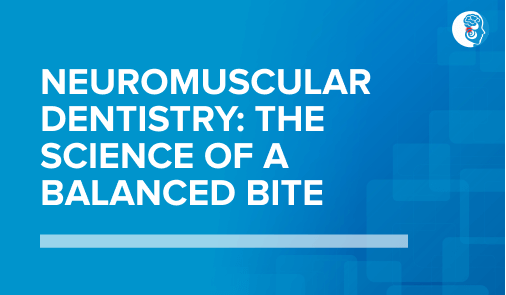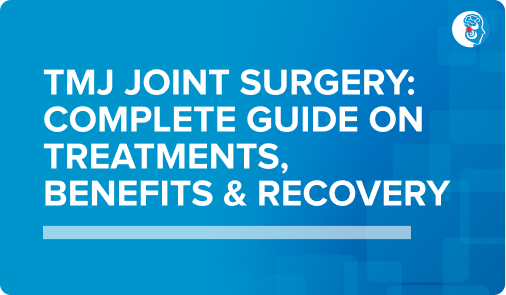
Neuromuscular Dentistry: The Science of a Balanced Bite
Your bite is more than just how your teeth come together. It also has an effect on the muscles and joints of your jaw. When
He/she should not only be able to diagnose the problem but also find out all the cause/s that led to the problem.
It is very difficult to diagnose TMD/CCMD and it’s causes because of it’s multitude of probable issues. It’s a very complex with almost-syndrome like symptoms ranging from ear aches to leg cramps and dizziness to finger tingling. A TMJ specialist, hence, should be well versed in not just the oral and facial structures but also the entire body
And this is the main reason why TMD/CCMD patients keep going around in circles from specialist to specialist. The doctors they go to, inspite of being an HOD of a hospital or dean of a college, have not been trained in the highly specialised field of Neuromuscular Dentistry. The TMJ, airway, facial muscles, cervical vertebrae, posture, the tongue, sleep apnoea, bruxism, etc., are all inter-related. However, they aren’t taught in either dental schools or medical schools. There is a huge void in the world of medicine to help patients get treated with these issues.
Awareness is the key. No one knows the inter relationship between the above factors, with no disrespect meant to anyone. Creating the awareness was my first challenge. It still continues to be but with the advent of social media, the job is easier.
The pharmaceutical industry literally runs the medical field. For something as simple as a headache to a lot more complicated migraine, the treatment is still the same….. DRUGS! During our diagnostic work up, we ask our patients if they had headaches. The general answer is NO. But when questioned if they have migraines, they answer YES. The way migraines are diagnosed is not proper. Unilateral headaches and nausea cannot be symptoms of just migraines. A patient suffering from headaches who is not responding to headache medicines, aren’t migraine patients. 90% of those patients may even have TMD/CCMD.

Every problem has multiple causes. It is upto the treating doc to first identify all those causes and then remove them. If one cause remains, the problem will relapse. I usually provide an example of 3 splinters entering your hand. Removing one or two splinters or just having medicines will not alleviate the pain. All the splinters need to be deeply discovered and removed methodically for proper treatment.
A lot of our patients have been on medicines for decades because the cause of the problem has not yet been DIAGNOSED!
To be able to diagnose properly, time is essential. It is tough in a country like India with doctors looking at scores of patients a day. On the contrary, there is also a misconception that the doc with the most patients would be the best. I would disagree. A good doctor needs time to diagnose.
My diagnostic protocol that we designed and perfected is used with precision at all our The Right Bite Sleep & Craniofacial Pain Care centres. It is exhaustive and comprehensive. I generally spend an hour on average with diagnostics and another half hour explaining the problem to the patient. A good patient is someone who understands why he/she is actually there in your office.
Treating TMD/CCMD is not difficult once the above are achieved.

Your bite is more than just how your teeth come together. It also has an effect on the muscles and joints of your jaw. When

TMJ disorders can severely affect daily activities such as chewing, speaking, sleeping, and even maintaining proper posture. When jaw movement becomes restricted or pain becomes

If you are planning to get braces to straighten your teeth, it’s very obvious to have hundreds of doubts in your mind like “How long
WhatsApp us